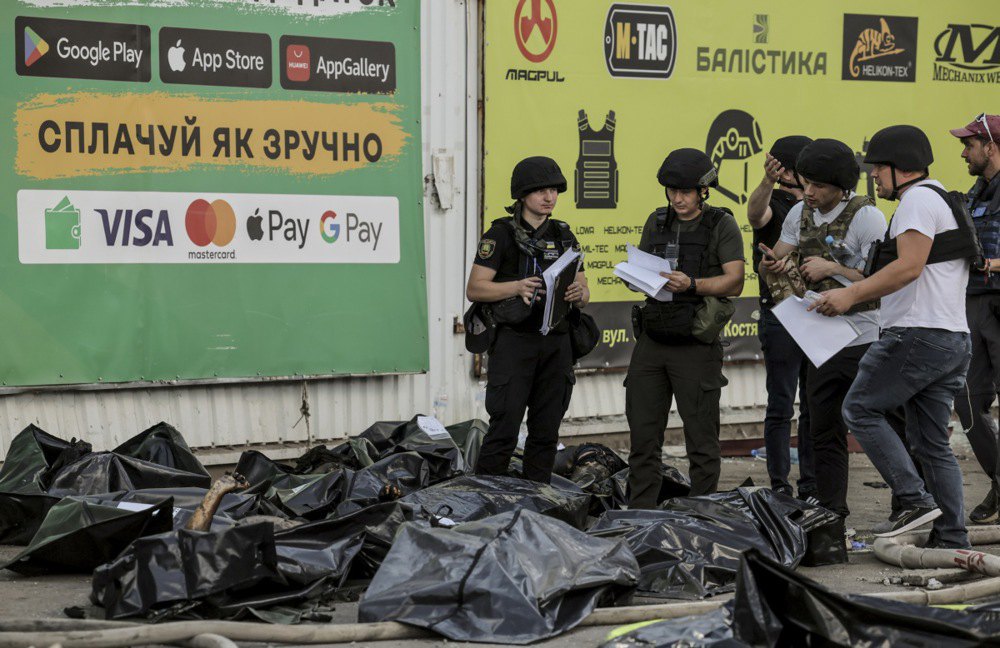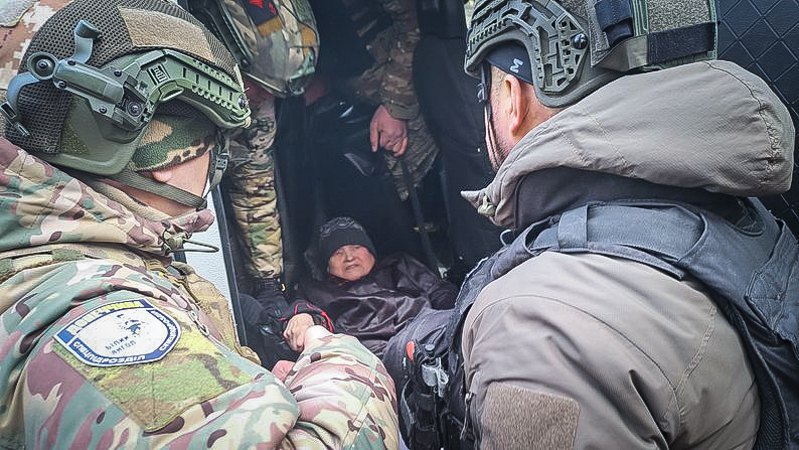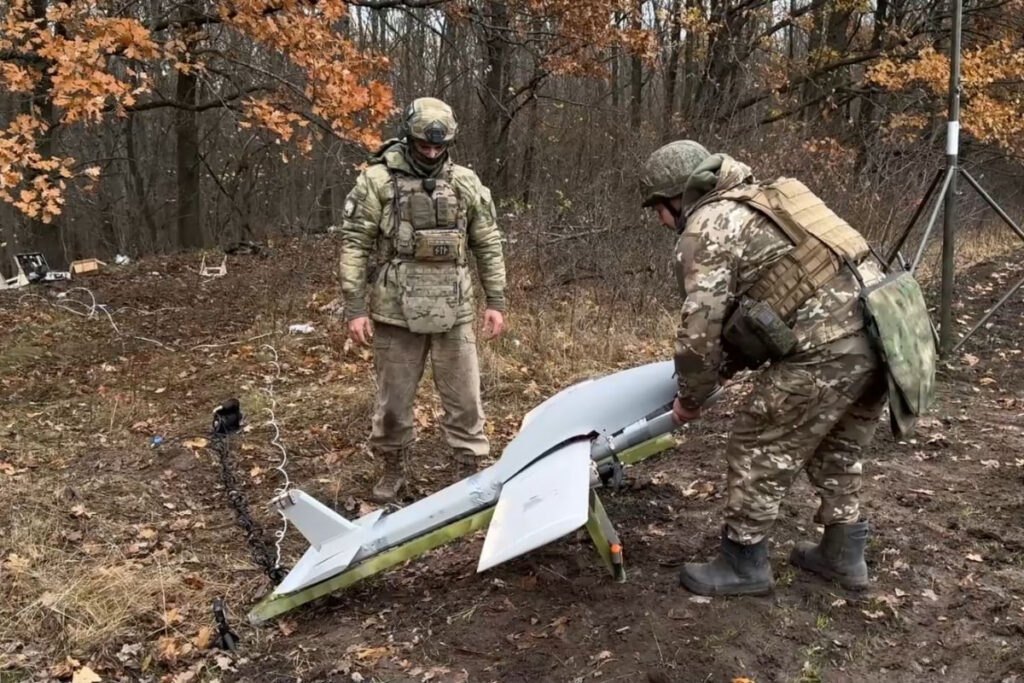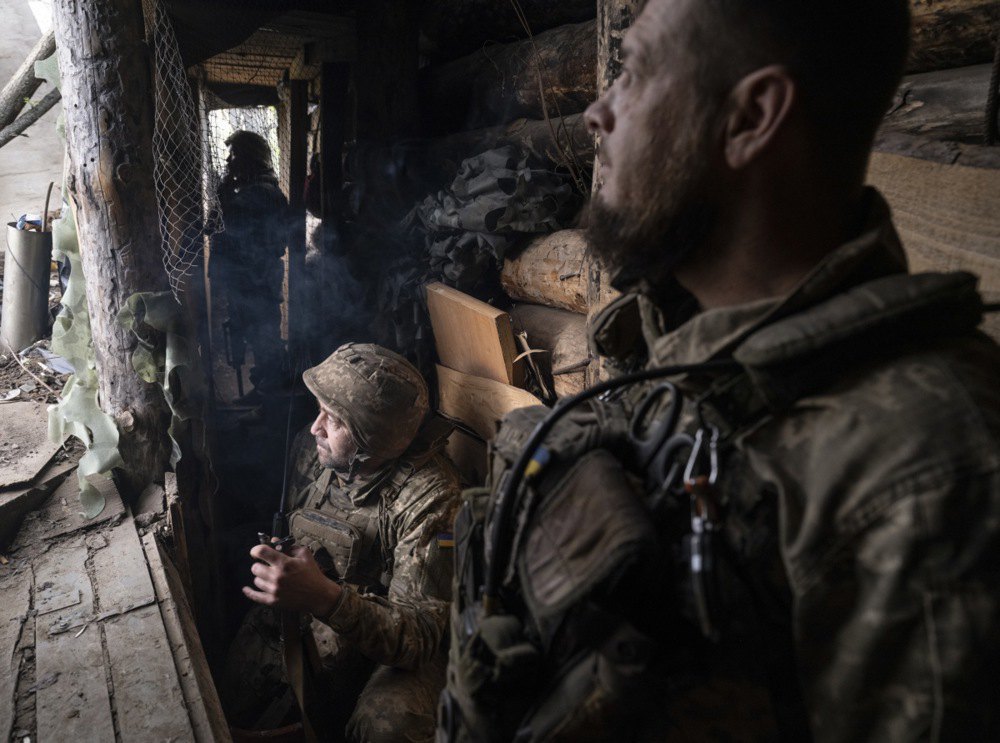
Regarding the recent armoured assault by the Russians. How often does this happen on this part of the frontline these months?
It depends on the weather conditions. If it starts to rain, there is fog, and visibility is reduced, armoured vehicles are always used.
But even in good weather and daylight hours, 99% of the vehicles end up burning. I do not know how they do it – whether someone gives the order from above and it is blindly followed.
Currently, we are seeing more assaults by small infantry groups, and we often observe motorcycle assaults – two or three motorcyclists trying to reach a certain point. These can also be eliminated, but it is much more difficult than working against large vehicles, because they are fast, small, and manoeuvrable. That is why it is a hassle.
What tactics does the Russian military mainly use in the city?
Drones are flying over Kostyantynivka, and UAVs are arriving, while artillery is operating. These are not targeted strikes – they are hitting residential areas with cluster munitions.
The Russians are simply destroying infrastructure, people’s homes, and attempting to kill civilians. That is why there is currently a curfew in Kostyantynivka from 3 p.m. to 11 a.m., so that people do not go out as much – because Russians can just launch 10 rockets that fall at random.
And this is regardless of the weather and time of day?
Yes, both at night and during the day. A person can be walking down the street and the shelling will begin.

Something similar to what they did in Bakhmut?
Yes. They deliberately strike the city to make people flee, to make conditions unbearable, and to destroy our logistics.
How is your logistics situation now? Especially after the Russians cut off the Pokrovsk–Myrnohrad–Kostyantynivka road at the end of May?
It has become more complicated on that side, particularly because Russian drones sometimes fly from Chasiv Yar. They can travel as far as 20–30 kilometres and terrorise the area.
But if we talk about logistics alone, there are almost daily reports of civilian private vehicles being struck by FPV drones in Kostyantynivka. And this is deliberate – because once the projectile is launched and no longer guided autonomously, the drone pilot controls the strike until the very last moment.
Are there many civilians left in the city?
Relatively fewer. I remember Kostyantynivka in 2022, when there were already few people here at the beginning of the invasion. Then they started coming back – in 2023–24, the population grew significantly. Now, according to official data, about 8,900 people remain, which is around one-fifth of the pre-evacuation population.
What is the humanitarian situation in Kostyantynivka in general? And is it possible to carry out the evacuation?
There is access to water and electricity, but with very significant interruptions, as Russians target the energy infrastructure and water pipelines. Services continue to restore them even under such conditions, but the Russian military deliberately strikes again afterwards. Nonetheless, the services are working and restoring what they can – the same applies to communications.

Evacuations are carried out daily by the White Angel unit. Their vehicles are also frequently targeted by FPV drones. However, anyone who wishes to leave still has the opportunity to do so.
What is it like for you to work? What is the situation at the positions, and how do you manage to rotate personnel?
It is difficult now because the weather is good – summer, no rain. From time to time, we actually need bad weather so that fewer drones are in the sky. That allows us to carry out rotation more effectively – to reach the frontline and deliver as many supplies, water, and food as possible.
Unfortunately, in sunny and clear conditions, it becomes more complicated. We have to stay at the positions for longer periods. Before, we could rotate after ten days, but now my men have already been there for 41 days. We organise logistics with drones – both aerial and ground-based – depending on where and what needs to be delivered.
Evacuating the wounded is also extremely challenging. If the situation allows, and the injury is not critical, we can wait and plan according to the weather. But in severe cases, we must adapt – and sometimes we rely on ground drones for evacuation.
What kind of drones do the Russians use? Are there many fibre-optic drones?
There are various types. I cannot say there is a single dominant model. However, the number of fibre-optic drones has increased, although simpler drones continue to operate.
The Russians also use a drone called Molniya, which is a winged drone with a connection, similar to an FPV. This drone is not powerful – it does not carry much ammunition – but it is suitable for flying into buildings or for launching against equipment. Fortunately, it lacks precision and struggles to hit specific targets. Still, it is effective for indiscriminate launches into settlements to terrorise the local population.

What is the situation with large reconnaissance drones? How active are they, and do they cause problems?
Certainly. Before any strike is carried out, they attempt reconnaissance, sending large winged drones over long distances – Orlan and Supercam. Some are shot down, but the Russians still manage to collect information.
How long has your unit been stationed on this part of the frontline?
We arrived in Donbas on 24 June 2022. At first, we were in Siversk. Then we were stationed near the Vuhlehirsk Thermal Power Plant, just outside Bakhmut. After that, we operated in the Toretsk direction, and from February 2023, we entered Bakhmut, holding the “road of life” from Klishchiyivka. We have been in this area since February 2023.
Has anything fundamentally changed in the Russian actions here during this time?
I would not say so. They continue to pay a very high price for every metre of Ukrainian land – as they did before, and as they still do now. Everything is littered with Russian bodies. I have the impression that whenever there are any negotiations, the attacks intensify – either to seize as much territory as possible or to demonstrate that they are still capable of attacking.
When our frontline positions are eventually destroyed, we withdraw to reserve positions. So, the Russian army advances by 100 metres, roughly speaking, and pays that price – to climb forward and die. It seems to me that nothing has fundamentally changed in these two years.
And what do they do when they advance 100 metres? Do they dig in?
No, they do not really dig in. They find minimal shelter – one Russian infantryman runs in, then another, then another. Once there are three or four of them, they try to storm our positions.
How do you assess the situation with equipment and ammunition on our side?
Over this period, it has varied – sometimes worse, sometimes better. Currently, on average, I would not say we are lacking anything. However, when we have more, we can expend more to halt Russian advances. Now, we must consider what will happen tomorrow. We know we will repel today’s attack, but we also know another may follow tomorrow.
With such a range of Russian drones, the “grey zone” has expanded. How do you manage to target Russian equipment under these conditions?
Indeed, the Russian military rarely uses equipment now – unless they receive some senseless order that they are compelled to carry out, and then the equipment burns.
Previously, you could hide equipment five kilometres from the front, in a ditch, to prevent it from being destroyed by artillery. Now, that no longer works. Both our equipment and theirs is concealed much further away to keep drones from reaching it.
The only way to strike it is either by using very long-range drones or waiting for the equipment to go into action – to move closer – and then there is a narrow window of opportunity when you can hit it.
During this time, do Russians learn from their mistakes, from your observations?
Perhaps the higher command does not learn – they can send troops on assaults in broad daylight. But those who are here on the ground already understand when to withdraw and wait for cloud cover or fog.

However, they are learning in the sense that, while we used to destroy their logistics and still do – for example, they used to have to walk several kilometres from Bakhmut to Ivanivske – now the enemy also flies deep behind our lines, searches for our logistics and transport, and attempts to strike. They are learning how to do that.
I also noticed that when different units were rotated in opposite us – for example, when the fourth motorised rifle battalion was stationed there and another unit arrived to support them – this often triggered a wave of intense assaults. I do not know whether it was an attempt to score points or to prove that the new unit could succeed where the previous one had failed, but it always ended the same way: we destroyed those assault groups. It seems like some sort of internal competition.
On 12 May, a ceasefire was announced for a month. What was happening at your site during those days?
It lasted a few days, but even during this period, while the enemy officially declared a cessation of hostilities, their attack drones continued to operate. Artillery activity slightly decreased, but drones – which are impossible to track – kept flying.
There were no infantry assaults, but they used this time to get closer. In other words, they continued pulling personnel up to the frontline in preparation for renewed assaults.
How are you and your colleagues coping with all this?
Everyone is really tired – it has been a long time since June 2022. But we all understand what we are doing here. We see what is happening to the frontline cities, we see on television what is happening in the deeper rear, and when we manage to take leave, everyone fully understands what will happen to our country and our families if we lay down our arms.
That is the kind of motivation that stems from harsh reality – a negative motivation, in a sense – because we know there are not many options. If we lay down our arms, the war ends, but not in our favour. If the enemy stops shooting, there will be no war. If we stop shooting, we will have no state, and we can forget about the existence of the Ukrainian nation.








